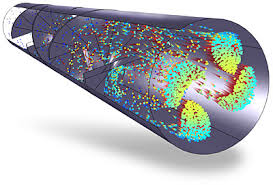 While filling an unmet consumer need is an obvious goal when launching a new product innovation, developing the right product is only part of the equation for success. Opportunities may ultimately be won or lost in the store, and marketers need a strong activation strategy to generate awareness and trial. In addition, all of this must be supported by a positive product experience. But which sources do consumers rely on to learn about new products? Where should marketers invest their time and money?
While filling an unmet consumer need is an obvious goal when launching a new product innovation, developing the right product is only part of the equation for success. Opportunities may ultimately be won or lost in the store, and marketers need a strong activation strategy to generate awareness and trial. In addition, all of this must be supported by a positive product experience. But which sources do consumers rely on to learn about new products? Where should marketers invest their time and money?
As the media landscape evolves, so too do the sources consumers use to find out about new products. For the purposes of The Nielsen Global New Product Innovation Survey, we’ve grouped the sources consumers say they use to get information about new products into three media categories: paid (traditional), earned and owned. Globally, shoppers’ reliance on earned media is growing while their attention toward some paid media sources are declining.
More than half of global respondents (52%) cite TV ads a top source of new-product awareness—the second highest percentage of the 20 sources reviewed—but this has declined 11 percentage points since Nielsen’s 2012 survey. In fact, reliance on seven of the nine “paid media” sources included in the survey stayed flat or declined in the three-year period. The only paid-advertising sources to increase in importance were Internet ads and video sharing websites, which each rose one percentage point.
“Media fragmentation is largely the cause for the decline in the reliance on TV as a top source for new product awareness,” said Rob Wengel, senior vice president and managing director of Nielsen Innovation in the U.S. “While TV offers the widest audience reach, a multi-media approach is necessary to connect with consumers at all touch points. In fact, Nielsen brand awareness studies show that the combination of TV and digital advertising can increase brand recall by 33% and message recall by 45% compared to TV ads alone.”*
But creative execution counts, too. An ad should not only clearly demonstrate usage—emotional context is also important to ensure the message is memorable and persuasive. Put simply, outstanding creative sets itself apart by balancing imagination with meaningful content.
BUSTING THE MYTH ABOUT MILLENNIALS AND TRADITIONAL MEDIA
While it’s a fairly common belief that digitally savvy Millennial and Generation Z consumers can’t be effectively reached through traditional paid advertising like their older counterparts, this assumption isn’t entirely accurate.
As expected, the youngest respondents are relying more heavily on digital and mobile tools to learn about new products than their older counterparts. But they also say they’re using several types of traditional advertising at comparable—or even greater—levels. Generation Z and Millennial respondents use TV and radio to learn about new products at similar rates as Generation X and Baby Boomer respondents, and their reliance on outdoor billboards/posters, public transport ads and ads at public events exceeds that of their older counterparts.


